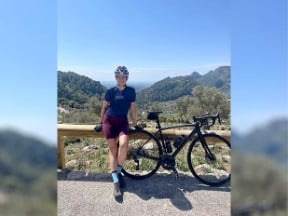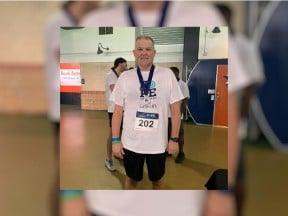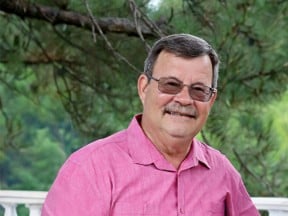Bob Ruff was working late on a Friday afternoon when he began to feel ill. “It felt like an elephant was sitting on my chest,” says Bob, then 62, a technical analyst for a rigging equipment supplier in Houston. “My throat and both sides of my neck were burning,” he says. “My jaw was hurting.”
Although he had no history of heart problems, Bob’s grandfather died of a heart attack. Bob, having received training in first aid, was certain that he was experiencing symptoms of a heart attack. Almost immediately, he asked co-workers to call 9-1-1. Within five minutes, Houston EMS arrived, and Bob asked to be taken to St. Luke’s Episcopal Hospital. Soon, Bob was in the Cardiac Catheterization Laboratory at St. Luke’s, where an interventional cardiologist performed an angioplasty, unblocking his heart artery within 27 minutes of his arrival to St. Luke’s and within 57 minutes of his first contact with emergency medical providers (EMS).
Bob experienced what is known as a STEMI—ST-elevation myocardial infarction. This complete blockage of a heart artery by a blood clot, as determined by an electrocardiogram, is the most severe type of heart attack. Bob’s blockage was in the left anterior descending artery, one of three arteries that feed the heart and the one that supplies blood to the largest area of the heart muscle.
“We call it the widow maker because a complete blockage in this area has the highest incidence of death if not attended to urgently,” says Cardiologist Maher Nasser, MD, who performed the procedure.
Recently, St. Luke’s was the first and only hospital in Greater Houston to receive accreditation as a Mission: Lifeline® Heart Attack (STEMI) Receiving Center by the American Heart Association and Society of Chest Pain Centers. This prestigious recognition was granted to St. Luke’s because of its success in developing and implementing a system to rapidly respond to patients having an acute heart attack. Due to well-orchestrated processes involving cardiologists and other personnel at St. Luke’s and EMS providers, St. Luke’s consistently unblocks a heart artery in less than 90 minutes from a patient’s first medical contact with a paramedic.
As for Bob, he spent less than 48 hours in the hospital and received the green light to be back on the golf course two weeks later. He credits Houston EMS and the St. Luke’s team with his successful outcome. “Everyone at St. Luke’s was outstanding,” he says.




